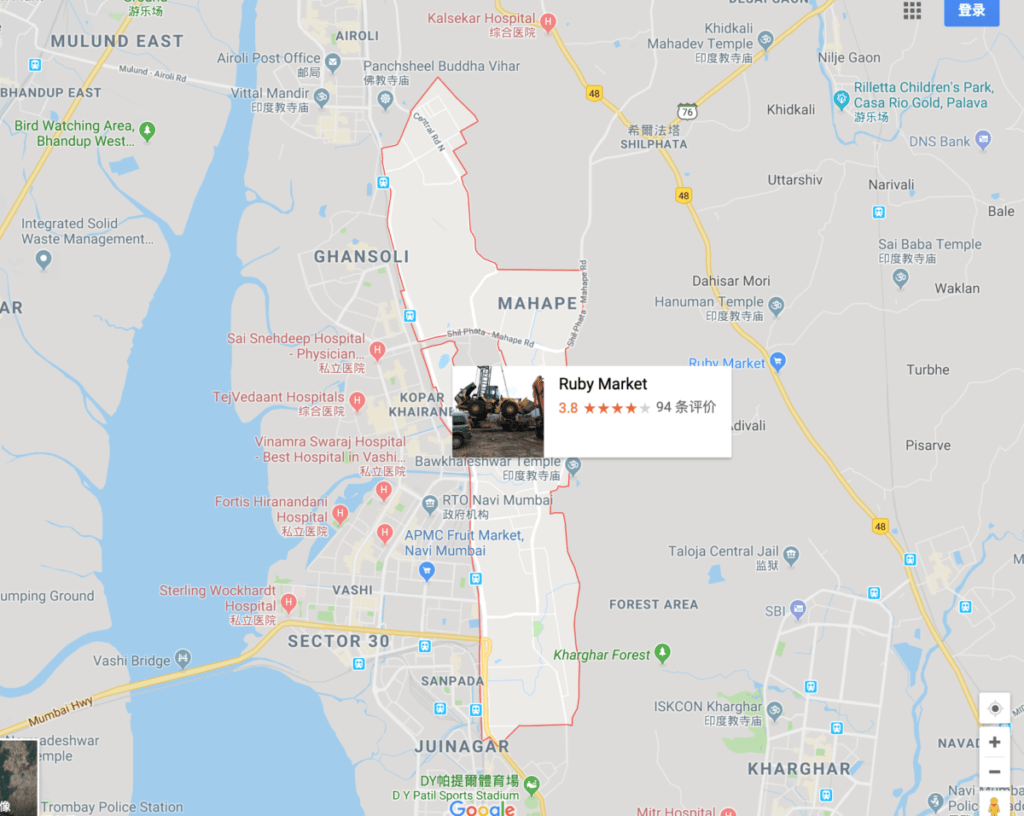By Meihan Hu, 06/17/2019. After talked with my cousin, who been working in Mumbai for a while, to understand better on things such as local transportation, food and others. I started focus on my subject, the MIDC. MIDC is the largest industrial zone in Mumbai’s northern suburb of Maharashtra. It covers an area of more than 20 square kilometers, hundreds of different size foreign and local factories located here.

About 50 kilometers north of Mumbai’s busiest southern seaport, and close to the MIDC industrial zone, the huge bronze lion sculpture, the face of “Making India go global.”, the face of Prime Minister Modi FK’s “Make in India”, stands out. It used to be said that the competition between Chinese manufacture and Indian manufacture were “dragon-elephant wars”. But Modi FK said that elephants were too slow, so he replaced the representative Indian totem of elephant with a lion.

First of all, MIDC industrial area has obvious geographical advantages, it is very close to the South Mumbai seaport, Mumbai International Airport, which is convenient and has a speed advantage on logistics. Second, the land in the industrial area is flat, there are no large residential areas and indigenous villages, and the cost of building factory buildings is low.

But the shortcomings of the industrial zone are also obvious. First, the road construction standards are very low, causing many sections of mixed traffic problems such as traffic congestion. Second, the underground pipe network did not take shape, rainwater and sewage mixed with open ditch discharge. It seems like the treatment of water pollution and air pollution has a long way to go.

At present, there are many chemical plants in the park from what I observed, including the world famous German BASF chemical plant. From the environmental protection point of view, the international well-known large companies, at least from the appearance of doing relatively good: Clean and organized park, tree-lined.

By comparison, the factories of local Indian companies are much poorer.

Compared with the stagnant atmosphere of the chemical plant, the only two information industry parks in the area are outstanding, developed and modern. Judging by the image of buildings, the clean greenery and the clean air, India’s Information Industry has still fared much better than its chemical plants since Modi began his manufacturing drive.

Valmet, based in Finland, is also in the area’s Second Information Industry Park.

The MIDC industrial zone offers a stark contrast: Some are well-developed and organized (like an information park), some has a long way to go (like a chemical plant) . The location is very good (near by the airport and seaport), but the road traffic is very poor. Construction costs are very low, but there are only few industrial plants that are up to code. The natural environment is conducive to the discharge of pollution, but in fact the environmental protection does not do well. In a word, it is an industrial treasure land, but in order to develop continuously and healthily, more funds should be invested in road traffic, underground pipe network, environmental protection, building code and so on. Above.


